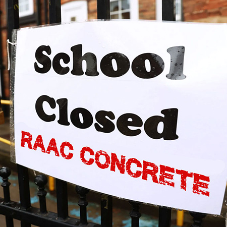The construction industry often presents challenges that require immediate attention, including safety hazards for workers. A recent report from the Health and Safety Executive (HSE) shows that fatal injuries to UK construction workers have risen by 20 percent since 2017, despite implementing the necessary health and safety procedures.
With construction workers tackling powerful machinery and high ladders daily, the industry is expected to face incidents, but many hazards can be eliminated with the correct precautions and training. This blog explores the risks associated with these construction related accidents, and highlights the importance of educating workers and following safety practises.
What are the main risks for construction workers?
With recent data stating that up to 10 percent of workers experience injury on active construction sites, there are multiple risks associated with this line of work - including:
Falling from a height
This hazard poses the biggest daily threat to workers, with almost a third of incidents involving falls from a height. These injuries may occur as a result of unsafe scaffolding, slippery surfaces, or a lack of protection measures.
Electrical Accidents
These incidents are often the result of safety negligence, where faulty equipment or unprotected wires can result in serious injury, such as electric shocks or burns.
Overall health - related concerns
Harsh materials involved in construction projects can pose many health concerns, such as breathing difficulties and skin irritation. For workers to achieve optimal results, regular health checks are required.
Considering the economic impact of workplace injuries
The economic impact of workplace injuries are vast, placing strain on the economy. Reports from the HSE estimates that these injuries cost the British economy up to £7.6 billion, covering compensation costs, insurance and legal fees.
Improving construction site safety
Improving and maintaining site safety requires a team approach, with both employees and management understanding their responsibilities. In the UK, primary legislation follows the Health & Safety At Work Act (1974), which requires employers to provide a safe working environment.
Additionally, as stated by the The Management of Health and Safety at Work Regulations (1999), established risk assessments must be completed to identify potential hazards before they cause harm, and must be reviewed regularly.
A detailed checklist for workers includes accounting for:
- Personal Protective Equipment (PPE)
- Extensive first aid supplies
- Ladder checks and safe scaffolding
- Potential electrical safety concerns
Following these precautions not only saves lives, but keeps workers healthy, motivated and able to produce desired results.
Related Blog Articles



crop192.png)












